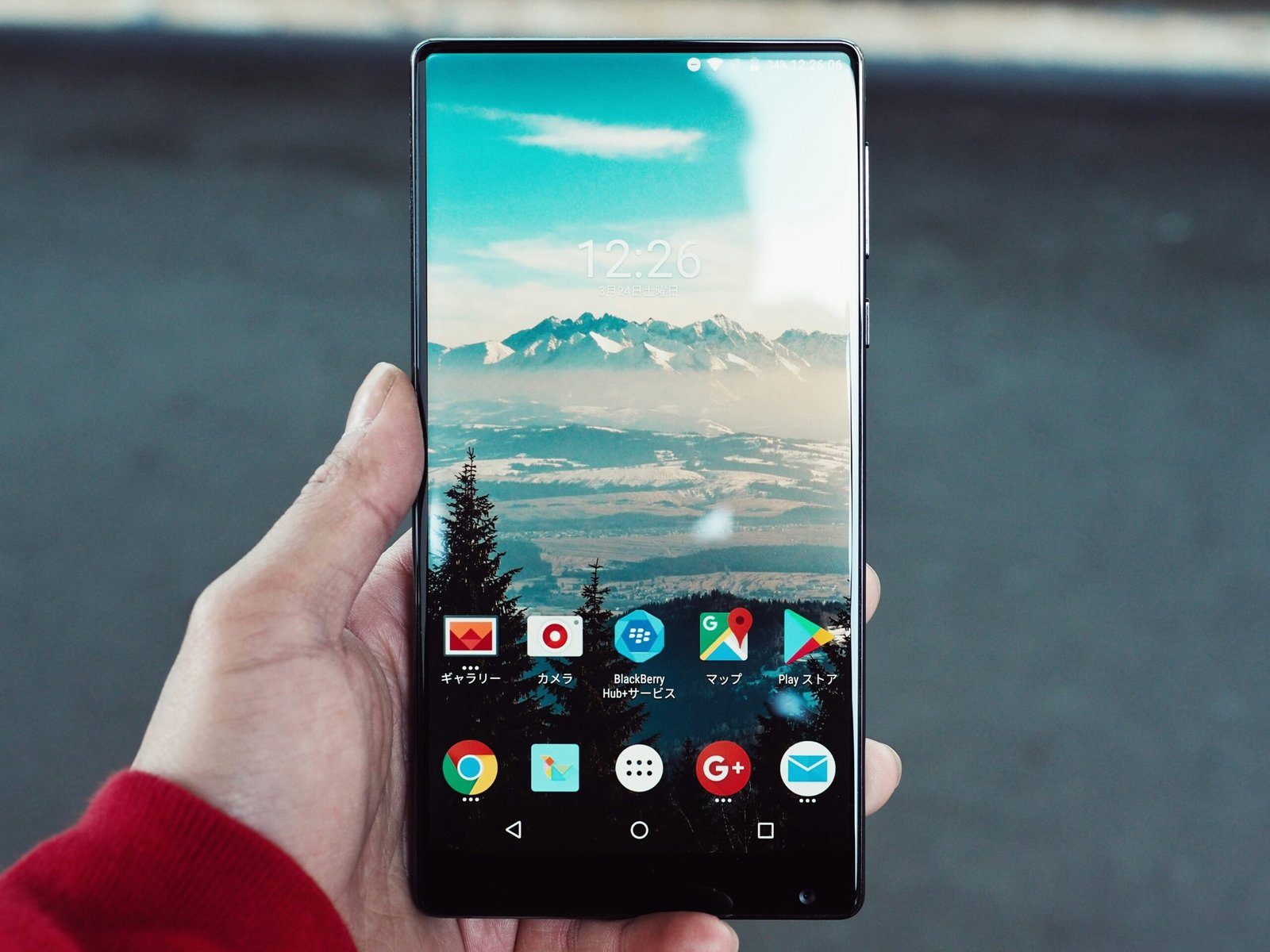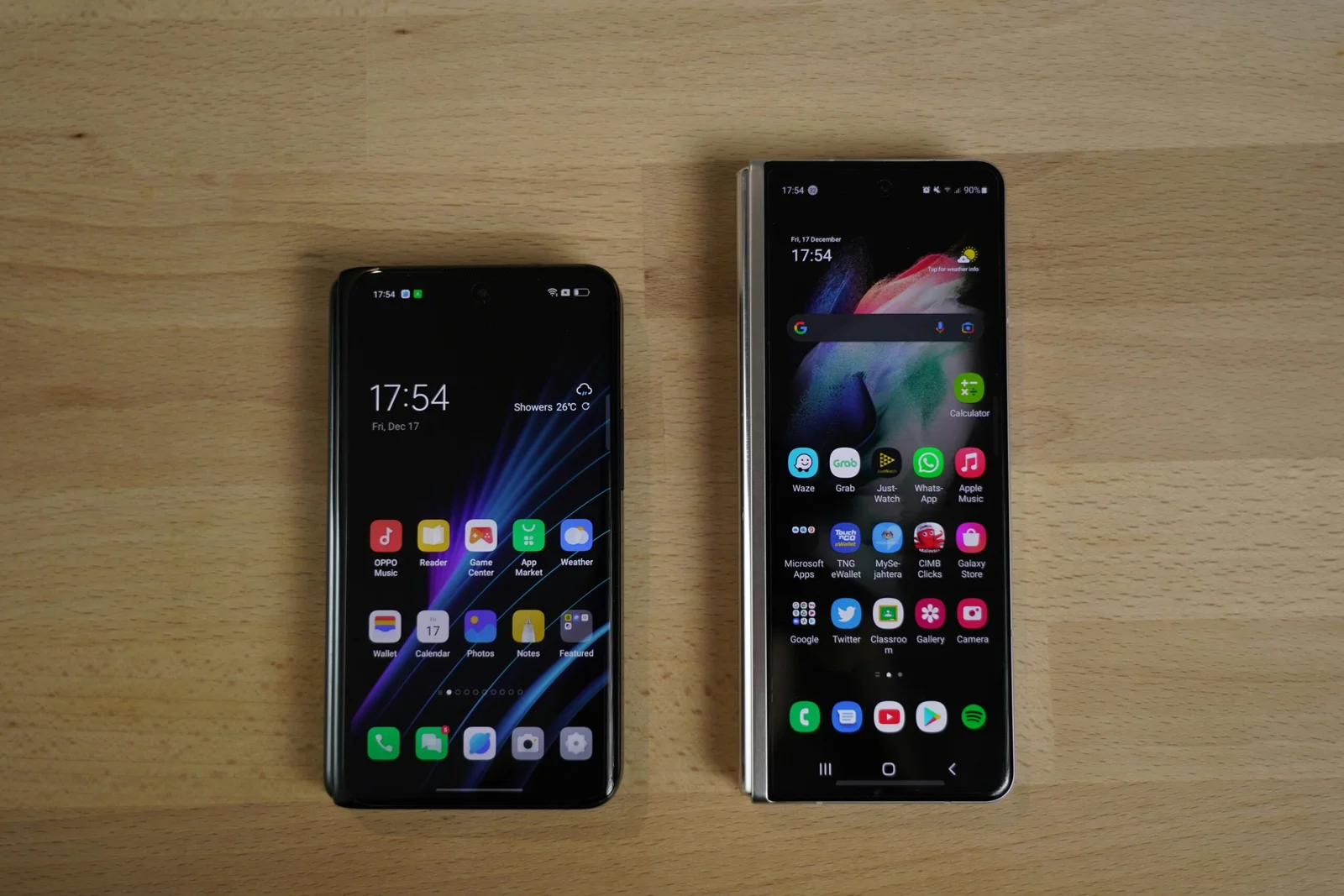 “`html
“`html
Introduction to Mobile Phone Batteries
The evolution of mobile phone batteries has been a pivotal aspect of the overall advancement in mobile technology. In the early days of mobile phones, battery technology was rudimentary, with nickel-cadmium (NiCd) batteries being the predominant choice. These batteries were bulky, had limited capacity, and were plagued by the “memory effect,” which significantly reduced their efficiency over time. Despite these challenges, they provided the essential power needed for the basic functionalities of early mobile devices.
As mobile phones transitioned from simple communication tools to sophisticated multimedia devices, the demand for more robust and efficient battery technology grew exponentially. The development of lithium-ion (Li-ion) batteries marked a significant milestone in this journey. Li-ion batteries offered higher energy density, longer life cycles, and eliminated the memory effect, making them more suitable for the increasing power requirements of modern smartphones.
Battery life and charging times have become critical factors in the usability and consumer satisfaction of mobile phones. The ability to maintain a charge throughout the day while supporting high-performance applications is now a standard expectation. This has driven continuous innovation in battery technology and charging methods, leading to the development of fast charging, wireless charging, and power management optimizations.
The importance of mobile phone batteries cannot be overstated. They are the lifeblood of mobile devices, enabling the seamless operation of features such as internet connectivity, high-definition cameras, and complex applications that define the modern smartphone experience. The journey from nickel-cadmium to lithium-ion and beyond reflects the relentless pursuit of efficiency, capacity, and convenience that has shaped the mobile industry.
Understanding the historical context and advancements in mobile phone batteries sets the stage for a comprehensive exploration of how battery and charging technologies have evolved. This evolution not only highlights the technological progress but also underscores the ongoing challenges and innovations that continue to drive the mobile phone industry forward.
The Early Days: Nickel-Cadmium (Ni-Cd) Batteries
In the nascent stages of mobile phone development, Nickel-Cadmium (Ni-Cd) batteries emerged as the primary power source. Characterized by their robust build and reliability, Ni-Cd batteries were widely adopted due to their ability to deliver consistent power over extended periods. These batteries typically offered moderate capacity, sufficient to support the limited functionalities of early mobile phones, which primarily included voice calls and basic text messaging.
One of the notable features of Ni-Cd batteries was their relatively rapid charging time compared to other battery technologies available at the time. Users could recharge their devices within a few hours, which was a significant advantage given the increasing dependency on mobile communication. However, this convenience came at a cost. Ni-Cd batteries had a well-documented “memory effect,” causing the battery to lose its maximum energy capacity if repeatedly recharged after being partially discharged. This issue often led to reduced battery performance over time.
The lifespan of Ni-Cd batteries was another area of concern. Frequent charging cycles and the memory effect contributed to their relatively short operational life. Despite these drawbacks, Ni-Cd batteries remained the standard for many years due to the lack of viable alternatives. However, the environmental impact of Ni-Cd batteries could not be ignored. Cadmium, a toxic heavy metal, posed significant environmental and health risks. Improper disposal of Ni-Cd batteries led to soil and water contamination, raising alarm among environmentalists and prompting stricter regulations.
The limitations and environmental concerns associated with Ni-Cd batteries necessitated the search for better alternatives. The quest for more efficient, longer-lasting, and environmentally friendly battery technologies paved the way for subsequent innovations in mobile phone power sources, ultimately leading to the development of Nickel-Metal Hydride (Ni-MH) and Lithium-Ion (Li-Ion) batteries.
The Shift to Nickel-Metal Hydride (Ni-MH) Batteries
The transition from Nickel-Cadmium (Ni-Cd) to Nickel-Metal Hydride (Ni-MH) batteries marked a significant advancement in mobile phone battery technology. This shift was driven by the need for higher capacity and environmentally friendly alternatives. Ni-MH batteries offer several advantages over their Ni-Cd counterparts, making them a preferred choice in the evolution of mobile phone batteries.
One of the primary benefits of Ni-MH batteries is their higher energy density. Ni-MH batteries can store more energy than Ni-Cd batteries of the same size, which translates to longer usage times for mobile devices. This improvement was crucial as mobile phones began to incorporate more features and functionalities, requiring batteries that could sustain longer operational periods.
Another significant advantage of Ni-MH batteries is their reduced environmental impact. Ni-Cd batteries contain cadmium, a toxic heavy metal that poses substantial environmental and health risks. The disposal and recycling of Ni-Cd batteries require stringent controls to prevent contamination. In contrast, Ni-MH batteries do not contain cadmium, making them less harmful to the environment and easier to recycle.
Despite these advantages, Ni-MH batteries are not without their challenges. One notable issue is the “memory effect,” a phenomenon where the battery appears to “remember” the point of discharge and subsequently reduces its capacity. Although this effect is less pronounced in Ni-MH batteries compared to Ni-Cd batteries, it can still pose a problem, especially if the battery is not regularly fully discharged before recharging.
Furthermore, charging inefficiencies can also be a concern with Ni-MH batteries. They tend to generate more heat during charging, which can lead to reduced efficiency and potentially damage the battery over time. Advanced charging techniques and temperature management systems have been developed to mitigate these issues, but they remain a consideration for users and manufacturers alike.
In conclusion, the shift to Nickel-Metal Hydride (Ni-MH) batteries represented a significant step forward in mobile phone battery technology. Their higher capacity and reduced environmental impact made them a favorable choice, despite challenges such as the memory effect and charging inefficiencies. Understanding these nuances is essential in appreciating the evolution of mobile phone batteries and the technology that powers our daily lives.
The Revolution of Lithium-Ion (Li-Ion) Batteries
The advent of Lithium-Ion (Li-Ion) batteries has marked a pivotal moment in the mobile phone industry, fundamentally transforming the design and functionality of modern devices. One of the most notable benefits of Li-Ion batteries is their higher energy density. This means that Li-Ion batteries can store more energy in a smaller volume, allowing mobile phones to run longer on a single charge without increasing the size or weight of the battery.
Another significant advantage is the extended lifespan of Li-Ion batteries. Unlike their predecessors, these batteries exhibit a slower rate of capacity loss, enabling them to retain their charge for a longer period. This ensures that mobile phones remain functional and efficient over extended usage periods, reducing the need for frequent battery replacements and contributing to the longevity of the devices.
Additionally, the reduced weight of Li-Ion batteries has been instrumental in the development of thinner and lighter mobile phones. This characteristic has allowed manufacturers to produce sleek, portable devices without compromising on battery life or performance. The lightweight nature of Li-Ion batteries also enhances the user experience by making mobile phones more comfortable to carry and handle.
The combination of higher energy density, longer lifespan, and reduced weight has not only enhanced the performance of mobile phones but has also paved the way for the integration of more advanced features. Li-Ion batteries have supported the inclusion of high-resolution displays, powerful processors, and a plethora of applications, transforming mobile phones into versatile, multifunctional devices. As a result, Li-Ion batteries have become the cornerstone of modern mobile technology, driving innovation and enabling the continuous evolution of mobile phones.
Advancements in Fast Charging Technologies
In recent years, the evolution of fast charging technologies has significantly transformed the landscape of mobile phone batteries and charging solutions. One of the pioneering advancements in this domain is Qualcomm’s Quick Charge technology. Initially introduced to reduce the time required to charge devices, Quick Charge has seen multiple iterations, with the latest versions capable of delivering up to 100W of power. This rapid charging capability allows users to achieve substantial battery levels in a matter of minutes, enhancing overall user convenience.
Another noteworthy development is USB Power Delivery (USB PD). This technology, standardized across various devices, offers flexible power delivery to accommodate the charging needs of a wide range of gadgets. With USB PD, power levels can be adjusted dynamically, ensuring optimal charging speeds while maintaining device safety. This universal approach not only reduces charging times but also simplifies the user experience by enabling a single charger to power multiple devices efficiently.
Various manufacturers have also introduced proprietary fast charging solutions tailored to their specific devices. For instance, OPPO’s VOOC (Voltage Open Loop Multi-step Constant-Current Charging) technology and OnePlus’s Warp Charge have set new benchmarks in charging efficiency. These innovations employ unique algorithms and hardware configurations to achieve rapid charging without overheating or compromising battery health. Similarly, Apple’s MagSafe and Samsung’s Super Fast Charging technologies have refined the fast charging experience for their respective ecosystems.
The integration of these advanced fast charging technologies has brought about a remarkable reduction in charging times. Users no longer need to tether their devices to power outlets for extended periods. Instead, a quick top-up can suffice for a day’s usage, making mobile phones more accessible and user-friendly. As these technologies continue to evolve, the future promises even faster and more efficient charging solutions, further enhancing the convenience and functionality of mobile devices.
The Emergence of Wireless Charging
Wireless charging technology has revolutionized the way we power our mobile devices. Emerging in the early 2010s, wireless charging has since become a standard feature in many smartphones. This technology operates primarily on two principles: inductive and resonant charging.
Inductive charging is the most widely used method and relies on electromagnetic fields to transfer energy between two coils: one in the charging pad and one in the device. When the device is placed on the charging pad, an alternating current in the pad’s coil generates a magnetic field, which induces a current in the device’s coil, thereby charging the battery. Meanwhile, resonant charging, though less common, allows for greater flexibility in device placement and can charge multiple devices simultaneously by using a resonant inductive coupling.
The benefits of wireless charging are numerous. It offers a convenient, cable-free solution, reducing wear and tear on charging ports and cables. Additionally, it contributes to the sleek, modern design of mobile devices by eliminating the need for bulky connectors. Wireless charging also enhances device durability by reducing the risk of water and dust ingress through charging ports.
However, wireless charging is not without its limitations. One significant drawback is efficiency; wireless charging is generally slower than traditional wired methods. The energy transfer process also generates heat, which can affect battery life over time. Furthermore, the need for precise alignment on the charging pad can be cumbersome for some users.
Despite these limitations, the impact of wireless charging on the design and functionality of mobile devices is profound. As technology advances, we can expect further improvements in efficiency, speed, and convenience. Wireless charging stations are increasingly becoming integrated into everyday environments, from coffee shops to airports, making it easier than ever to keep devices powered on the go.
The Future of Mobile Phone Batteries: Solid-State and Beyond
As the demand for more efficient and durable mobile phone batteries continues to grow, the focus has shifted towards innovative technologies that promise significant advancements. Among these, solid-state batteries have emerged as a frontrunner. Unlike traditional lithium-ion batteries, solid-state batteries utilize a solid electrolyte instead of a liquid one. This fundamental change offers numerous potential advantages that could revolutionize mobile phone battery performance.
One of the most notable benefits of solid-state batteries is their higher energy density. This means that for the same size, solid-state batteries can store more energy, allowing for longer battery life. This is particularly vital as mobile phones become more powerful and feature-rich, demanding greater energy reserves. Furthermore, the solid electrolyte in these batteries reduces the risk of leakage and flammability, significantly enhancing safety. This could be crucial in preventing the overheating issues that have plagued lithium-ion batteries over the years.
Another promising aspect of solid-state batteries is their potential for faster charging times. The solid electrolyte can support higher voltages, which translates to quicker energy transfer from the charger to the battery. This means users could benefit from dramatically reduced charging times, a feature that is increasingly sought after in our fast-paced, on-the-go society.
Beyond solid-state technology, researchers are exploring other pioneering battery technologies that could shape the future of mobile phones. For instance, lithium-sulfur batteries are being investigated for their high energy density and lower cost. Additionally, graphene-based batteries are gaining attention for their exceptional conductivity and flexibility, which could lead to even thinner and more efficient battery designs.
Moreover, advancements in nanotechnology are paving the way for batteries that can self-heal and have longer lifespans. These batteries utilize nanomaterials to repair themselves after damage, potentially leading to more durable and reliable power sources for mobile devices. Such innovations could drastically reduce the need for frequent battery replacements, offering both economic and environmental benefits.
In conclusion, the future of mobile phone batteries is poised for transformative changes with the advent of solid-state technology and other cutting-edge innovations. As research progresses, these advancements hold the promise of delivering safer, more efficient, and longer-lasting batteries that will keep up with the evolving demands of modern mobile devices.
Conclusion: The Journey and Future Prospects
The evolution of mobile phone batteries and charging technologies has been nothing short of remarkable. From the early days of bulky, short-lived batteries to the present era of sleek, high-capacity power sources, the advancements in this field have significantly enhanced the user experience. Early mobile phones relied on Nickel-Cadmium (NiCd) batteries, which, despite their durability, suffered from the notorious “memory effect” that diminished their capacity over time. This was followed by the introduction of Nickel-Metal Hydride (NiMH) batteries, which offered better performance but still fell short in terms of energy density.
The true revolution came with the advent of Lithium-Ion (Li-Ion) batteries. These batteries not only provided higher energy density and longer life cycles but also eliminated the memory effect, making them the preferred choice for modern smartphones. The integration of fast charging technologies, such as Qualcomm’s Quick Charge and USB Power Delivery, further transformed the landscape, allowing users to replenish their battery life in a fraction of the time previously required.
Looking ahead, the future prospects for mobile phone batteries and charging technologies are incredibly promising. Innovations like solid-state batteries, which promise even higher energy densities and improved safety, are on the horizon. Additionally, the development of wireless charging technologies, including long-range wireless charging, could offer unprecedented convenience. Researchers are also exploring the potential of graphene-based batteries, which could lead to faster charging times and longer battery life.
In summary, the journey of mobile phone batteries and charging technologies is a testament to the relentless pursuit of innovation that defines the tech industry. As we stand on the cusp of new breakthroughs, it is clear that the future holds even more exciting advancements, ensuring that our mobile devices will continue to evolve and better meet our needs.






